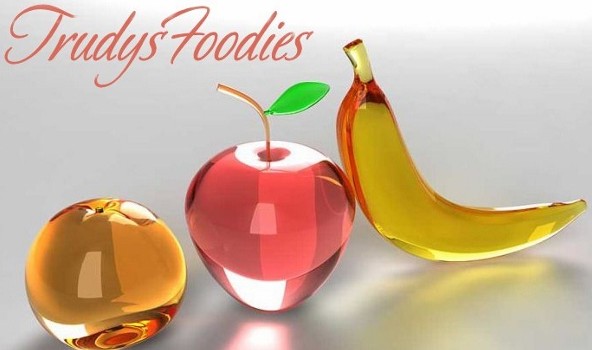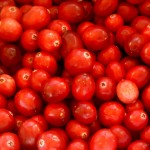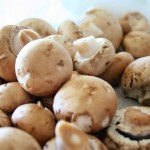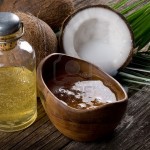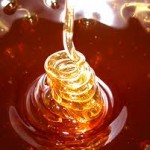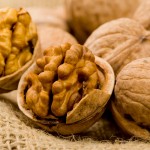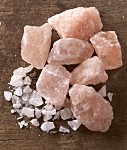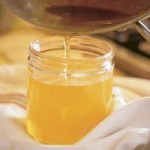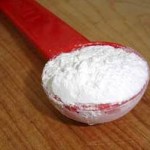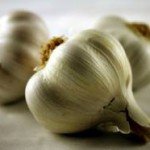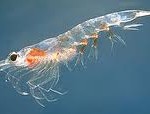All views and opinions stated on this webpage are those of the author and do not represent those of the medical or health care industry. Information found here can also be obtained from publicly available information.
Cranberry Pectin – when making cranberry sauce from fresh cranberries, simmer berries no longer than 15 minutes as the pectin released from the burst berries will break down with prolonged heating and prevent the sauce from setting up properly.
Mushrooms give the ultimate umami (sense of savoriness) experience! This must be why my daughter urges me to add more mushrooms to the turkey stuffing:) They are low in calories, high in glutamates (responsible for that umami taste) and high in potassium.
Chocolate whipped cream is a real treat for the holidays, easy to make and keeps very well in the frig…Break 4 oz of Lindt Bittersweet Chocolate into small pieces in a heat proof bowl. Heat 1 cup heavy cream with 1 to 2 Tb sugar, just to a boil. Immediately pour over chocolate and stir to melt. Cover and refrigerate 4 hours just until cold but still liquid. Whip until firm peaks. Warning: if you allow to chill until solid, it becomes the melt-in-your mouth chocolate truffle of your dreams! In this case, simply scoop out small, delicate balls of the ganache and roll in finely chopped nuts or cocoa powder, place in tiny candy papercups and pretend like you meant to make them all along!
Eggshells and whites are very high in hyaluronic acid (nutritional supplement used to reduce inflammation and to lubricate joints). Save your broken egg shells in the freezer for the next time you are making a soup with a long simmer time, such as chicken soup. Throw them in with the chicken carcass and strain out the shells at the end, for a highly nutritious chicken soup. You can also rub the egg whites left in the shells all over your face and let air dry before rinsing off, for a fast, easy, inexpensive facial that tightens the skin and cleans the pores.
Coconut Oil is not only a natural antibacterial agent, but serves as an excellent moisturizer. I use it straight, as an emollient at night, lightly rubbing it on my hands (especially around the nail cuticles), face (avoiding near the eyes), elbows, knees…just before bed. Skin readily absorbs this medium chain fat, and once absorbed into your bloodstream, can actually help lower bad cholesterol as well as aid in providing ketones as energy to your brain cells, thus helping to fight forgetfulness. I am not a doctor, but what makes you smell like a ‘day at the beach’ can’t be all bad…plus I have great skin!
With cold/flu season fast approaching, you want to have on hand a fresh supply of zinc throat lozenges and raw manuka honey, with a UMF of 16 or greater. This particular rare and expensive honey is antibacterial, and when combined with either apple cider vinegar or mixed into a whiskey/lemon throat gargle…can help cure what ails you.
I know you’ll think I’m joking, but a raw walnut (sans shell, silly) rubbed on a lightly scratched wood surface will make it disappear…the scratch, not the wood. I’m not talking a heavily grooved dent…but light scratches do indeed disappear like magic! It’s the walnut oils that do the trick. After rubbing the walnut meat lightly in circular motions over the scratch, allow to sit a short while before lightly rubbing with a soft cloth.
Male Wild Turkey Female Wild Turkey
Only male turkeys gobble, females click! hmmmm….
Salt is an essential element to proper functioning of your body. Homer called it the “gift of the gods”. The word salary was derived from the Latin word for salt. Although I haven’t stated it in my recipes, I only use Himalayan Salt and have for years. Himalayan salt is mined by hand in the ancient Himalayan mountains where it was formed 250 million years ago, before toxins and pollutants. It is the only pure form of salt available to us today. Even sea salt is no longer free of toxins and pollutants from the oceans. Himalayan salt is 85% pure NaCl, sodium chloride, and 15% trace elements, all 84 trace elements already found in the body. Because it’s crystals are small enough to be absorbed by the cells, it helps promote electrolyte balance…unlike table salt, which needs 23 times more water to neutralize its effects, hence the swelling you experience after eating processed foods. Once you begin to use Himalayan salt, you will notice your foods taste better, need less salt for flavor and your tissues won’t swell up from retained water.
Ghee is more than just clarified butter, it is cooked longer to remove all its moisture and to caramelize the dairy solids…giving the butter liquid a nutty flavor…and you can store it at room temperature in a dark pantry or cupboard for months if you don’t allow any moisture to contaminate it, or light to cause it to oxidize and become rancid. Simply melt unsalted butter in a pan over medium low heat. Allow it to simmer. The butter will separate into a top layer of foam (water content) the middle layer of butter liquid, and the bottom layer of dairy solids. After ~ 30 minutes the foam will evaporate. Watch the translucent butter closely, stirring now and then until the dairy solids turn a light brown but before they burn. Now remove pan from the heat, skim away any remaining foam on top and allow the ghee to cool before straining it through a sieve, or spooning the only the clear, golden butter liquid into a clean storage jar, discarding the milk solids at the bottom. It is recommended that ghee not be stored in the refrigerator. Prevent moisture from forming inside the jar. This ghee can be used to accompany lobster, paint filo leaves for baklava or spanakopita, saute, sweat or flavor your cooking/baking/roasting when you want that rich butter flavor and aroma without the burnt dairy solids.
Baking powder is a chemical leavening agent that causes batters to rise when baked. It consists of baking soda, plus an acidic salt, and cornstarch to absorb any moisture to prevent a reaction from taking place until a liquid is added to a batter. Buy double-acting baking powder, avoiding those containing aluminum salts (for health reasons), store in a cool, dry place….and replace your supply every 6-12 months. Double-acting means that baking powder begins its leavening action when liquid is added to dry ingredients. The acidic salt (usually a phosphate) reacts with the baking soda as soon as liquid is added, producing carbon dioxide gas. The second reaction takes place when the batter is placed in the heat of your oven. The gas cells from the first reaction expand with heat to make the batter rise. Once you add the liquid, you can only wait 15-20 minutes before baking without losing leavening power. To test baking powder’s effectiveness: mix 1 tsp with 1/2 cup hot water. Mixture should bubble immediately.
Garlic gives you bad breath three ways… initially due to the sulfuric compounds released when you chew the garlic meat, then the garlic itself promotes the growth of microbes that produce bad breath, and finally those same sulfuric compounds are readily metabolized in the body, enter your blood stream as allyl methyl sulfide and are exuded from your pores when you sweat, or passed into the air that fills your lungs, making your breath stink even if you brush your teeth or gargle.
A fresh apple consists of as much as 25% air…which is why they float in water, making them ideal for the ‘bobbing for apples’ game!
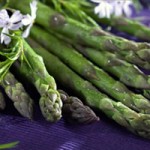
Asparagus is a member of the Lily family, making it a cousin to onions, leeks and garlic. The name is Greek for “sprout” and has long enjoyed the reputation of being a luxury veggie…and yes, eating asparagus does make your pee stink. It only takes about 15 minutes for the metabolic sulphuric compounds to be digested and sent to your kidneys for elimination. It was long thought that only 25% of the population developed this stinky pee, but come to find out, the genetic deficiency is not in the pee, but on the other end…meaning those who can’t sniff the asparagus tainted pee have a nose sniffing deficiency! Seriously, asparagus is nutrient-dense, being high in folic acid (for building strong cells) and a good source of potassium (to help prevent calcium leaching which may prevent and cure the formation of kidney stones), Vitamin A, C, B6, niacin and fiber. It also has diuretic properties and is thought to help dissolve uric acid (cause of gout). The wider the diameter of the stem, the more nutritious….who knew? Simply snap 2/3’s of the length down from the tip to remove the woody portion of the stem before preparing. Peel or not to peel, your choice. Clean stems and store upright in 2 inches of cold water in the refrigerator for a few days.
Krill oil is the new cod liver oil. To those of you who actively seek safe sources of omega 3s, krill oil is all the buzz. Why? Well, primarily because these tiny crustaceans are less laden with the toxins that pollute our oceans, due to sourcing primarily from the cleaner Antarctic waters and being only 2 inches long (biomass from Antarctic krill alone is estimated to be more than the total biomass of all humans on earth, including all of us super-sized Americans!)…and, if properly processed there is no fishy smell, no burping of fish breath (because it’s a higher carbon fat molecule which is more easily absorbed, thus no fermentation in your gut to cause those burps), and no danger of oxidation (which degrades the oil) due to the protection of the potent antioxidant, astaxanthin. It is a superior source of omega 3s because it’s directly absorbed into the blood stream, so you need far less of it. If you are in the know about the heart health/immunity and memory support of omega 3s, then make sure you get your share of plant-based ALA-laced omega 3s from flax or chia, but also enrich your diet with DHA & EPA-rich krill oil caplets. Krill has been considered for centuries to be a luscious delicacy called okiami in Japan. It is the ‘keystone’ source of nutrition in the food chain of our oceans.
